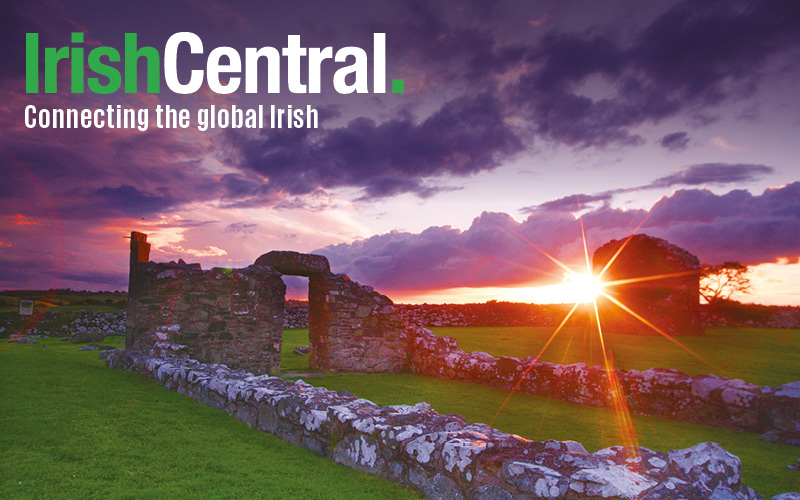Take a week out to trace St. Patrick’s footsteps and explore Ireland’s Christian tradition.
You might not be able to drive the snakes out of the country, but you can at least learn about the man, the myth and Ireland’s religious past.
This Christian-themed tour of Ireland takes you in a loop from Dublin, up north to Belfast, west to Sligo, over to Offaly and back to Dublin again. Along the way, you’ll see St. Patrick’s Cathedral, visit the religious capital of pre-Christian Ireland, stand in the footprints of the High Kings, check out the preserved head (yes, head) of an Irish saint and meander through a grave site dating back to the 8th century.
So book your flight, grab your camera, and get ready to witness some of the most interesting, awe-inspiring Christian relics and ruins in Ireland.
Dublin to Dublin Loop
Distance: 823 km
Recommended Length of Trip: 7-10 days
Means of travel: Car
Distance: 823 km
Recommended Length of Trip: 7-10 days
Means of travel: Car
|
1
|
Dublin
|
0km
|
|
2
|
Meath to Belfast
|
178km
|
|
3
|
Down to Armagh
|
77km
|
|
4
|
Armagh to Sligo
|
219km
|
|
5
|
Sligo to Galway
|
138km
|
|
6
|
Galway to Offaly
|
85km
|
|
7
|
Offaly to Dublin
|
126km
|
Day 1: Dublin
- Arrive in Dublin.
- Spend a half-day sightseeing in the capital. Make sure you visit St. Patrick’s Cathedral, which was founded in 1190 and restored in the 19th century. It is also the burial place of Jonathan Swift, the author of Gulliver’s Travels.
- Visit Trinity College, Ireland’s oldest and most famous college. Here you can also find the Book of Kells, which is considered to be the most impressive manuscript ever produced in the Anglo-Saxon world.
- Visit the National Museum in Kildare Street. The museum’s collection of medieval artifacts includes an 8th century iron bell which Patrick used to call the believers to mass and a beautiful bell shrine dating back to 1100 that was used to commemorate St. Patrick.
Day 2: Meath-Louth-Belfast
- Take the N3 from Dublin and travel to the Hill of Tara, County Meath, site of the religious and cultural capital of pre-Christian Ireland. Dating from 2000BC, the hill was the seat of the high kings of Ireland until 1022AD.
- Stop off in Kells and explore the heritage town before driving on to Slane Hill, where St. Patrick lit the Paschal fire on the eve of Easter, 433AD.
- Continue to Drogheda (N51) for lunch and a visit to see the head (yes, the head) of St. Oliver Plunkett in St. Peter’s Catholic Church.
- After lunch, visit Monasterboice and Old Mellifont Abbey (M1) with their Celtic crosses and ruined abbey before traveling on to Belfast, (M1) capital of Northern Ireland. It was here in the famous shipyards of Belfast that the ill-fated liner, Titanic was built.
Day 3: Down-Armagh
- Drive the short distance to Downpatrick, County Down (A20) and visit the Cathedral, which is closely associated with St. Patrick. A stone in the ground marks the spot where St. Patrick is thought to be buried. The newly opened St. Patrick’s Center is also worth a visit.
- Continue on to the small but important city of Armagh, which is the ancient ecclesiastical center of Ireland. There are two cathedrals in Armagh dedicated to Ireland’s patron saint, both of them are worth a visit, as are the exhibitions at St. Patrick’s Trian Visitor Complex.
Day 4: Armagh-Belleek-Sligo- Mayo
- Drive from Armagh or Enniskillen to Belleek, a border town between Donegal and Fermanagh, home of Ireland’s oldest pottery. The fragile, lustrous china is sold worldwide and you can watch the artisans at work.
- Continue on to Sligo (N16) where the poet William Butler Yeats spent many years. Visit Drumcliff where Yeats is buried, before traveling to Croagh Patrick, (N17) the 2,540 ft. mountain, which dominates the town of Westport, Co. Mayo. St. Patrick is reputed to have spent 40 days fasting on the summit of the mountain in 441AD.
Day 5: Sligo-Galway
- Drive on to Galway (N84) and visit the Galway Crystal Heritage Center for a tour of the center along with some discounted world-famous Irish crystal.
- Travel to Kylemore in Connemara and visit Kylemore Abbey, restored Gothic church and gardens. Home of the Benedictine nuns in Ireland, Kylemore was originally built as a castle in 1868 and is one of the best examples of neo-Gothic architecture.
Day 6: Galway-Offaly
- From Galway drive to Clonmacnoise in Co. Offaly. Its central location contributed to its development as a major center of religion, learning, trade, craftsmanship and political influence. Clonmacnoise has a large collection of grave-slabs dating from the 8th to the 12th century, as well as one of Ireland's finest surviving High Crosses. In addition, the monastery contains many religious buildings.
Day 7: Offaly-Dublin
- Continue on to Dublin, spend another day enjoying the city sites, and you’ve completed the Irish Christian Heritage loop!
Powered by DiscoverIreland.com




Comments